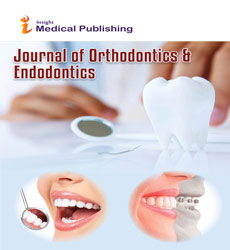Abstract
Minimal Management Of Traumatically Luxated Immature Maxillary Permanent Incisors
Background: Luxations account for half of all traumatic dental injuries and occur most frequently to maxillary incisors during childhood and adolescence. The dental pulp response to traumatic luxation injuries can be survival, calcification or necrosis, depending on the severity and type of injury and the developmental stage of the tooth. However, the dental pulps of severely luxated immature teeth have the ability to remain viable and continue to function.
Methods: An 8 year old girl sustained traumatic luxation injuries of different types to her maxillary immature permanent incisors that were repositioned and stabilized for 1 month and managed without endodontic intervention. Clinical and radiographic follow-up examinations were conducted at 6-month intervals for 2 ½ years.
Findings: Assessment at the end of the follow-up period revealed continued root growth and apical development, the absence of pulpal and periapical disease and retention of the maxillary incisors in a state of health and normal function.
Conclusions: Careful and continual assessment is necessary to determine the progress and prognosis of pulpal healing for traumatically luxated immature teeth.
Author(s):
Peter M. Di Fiore
Abstract | Full-Text | PDF
Share this

Google scholar citation report
Citations : 265
Journal of Orthodontics & Endodontics received 265 citations as per google scholar report
Abstracted/Indexed in
- Google Scholar
- China National Knowledge Infrastructure (CNKI)
- Cosmos IF
- Directory of Research Journal Indexing (DRJI)
- WorldCat
- Geneva Foundation for Medical Education and Research
- Secret Search Engine Labs
- Euro Pub
Open Access Journals
- Aquaculture & Veterinary Science
- Chemistry & Chemical Sciences
- Clinical Sciences
- Engineering
- General Science
- Genetics & Molecular Biology
- Health Care & Nursing
- Immunology & Microbiology
- Materials Science
- Mathematics & Physics
- Medical Sciences
- Neurology & Psychiatry
- Oncology & Cancer Science
- Pharmaceutical Sciences

